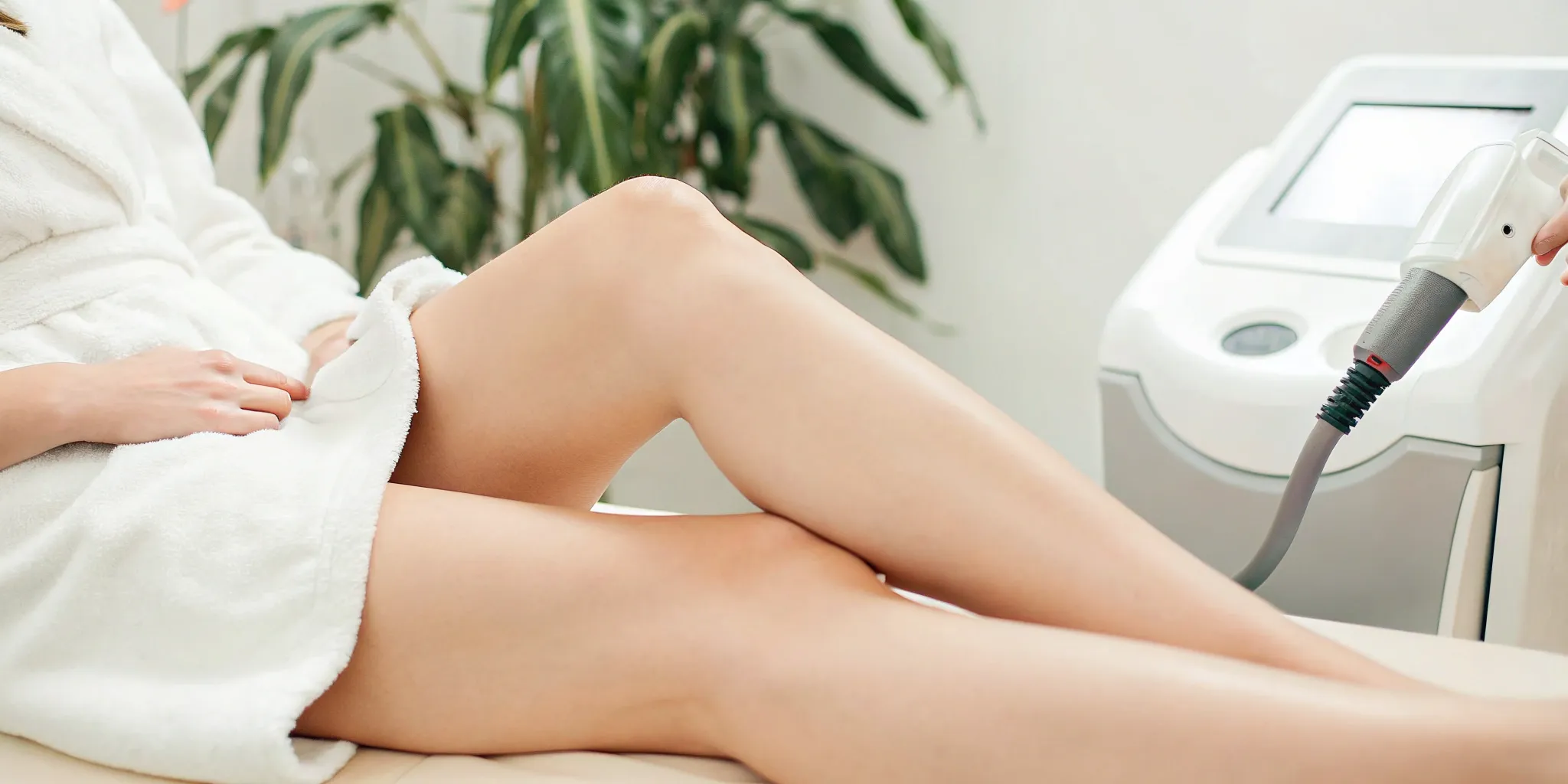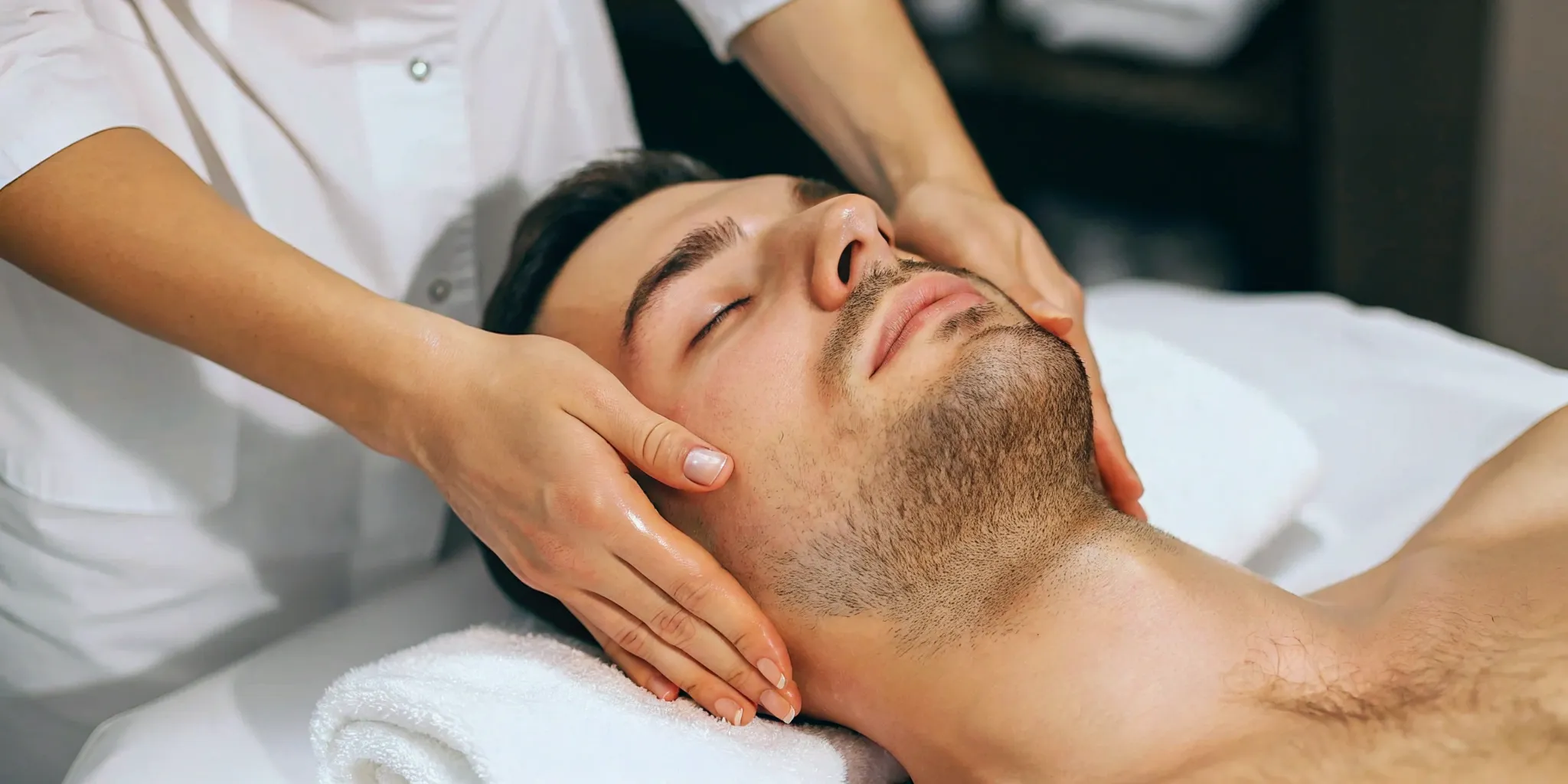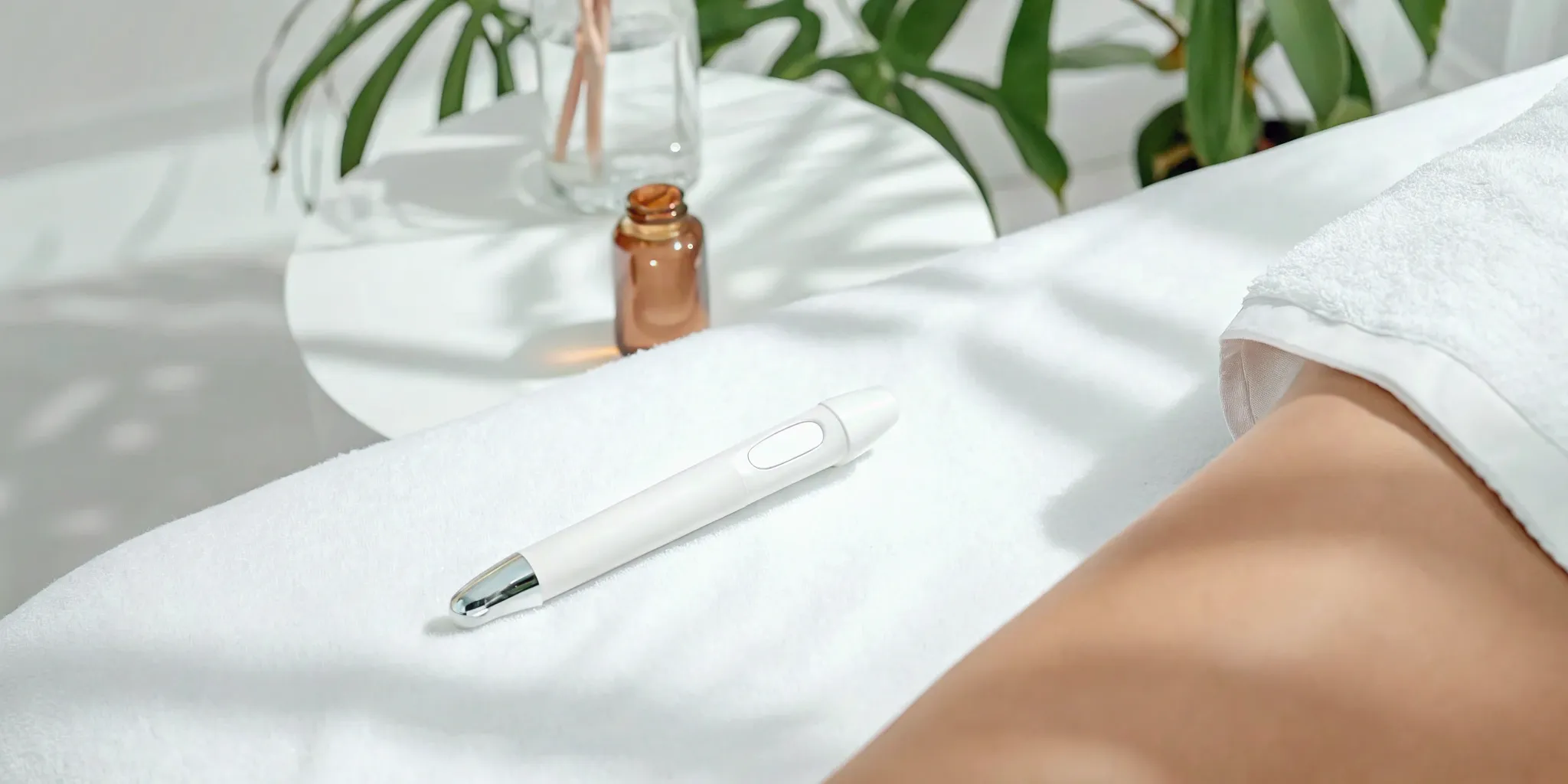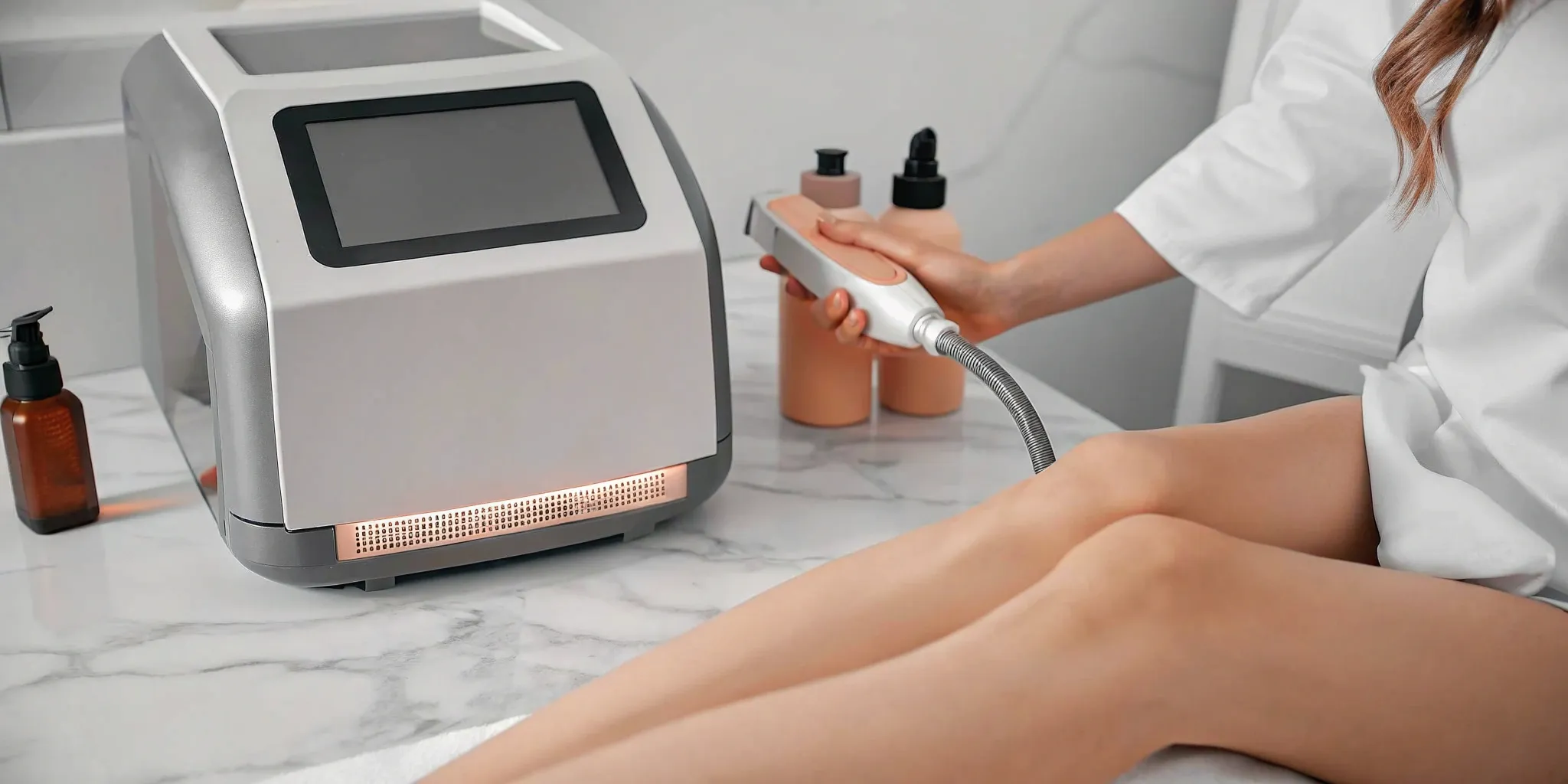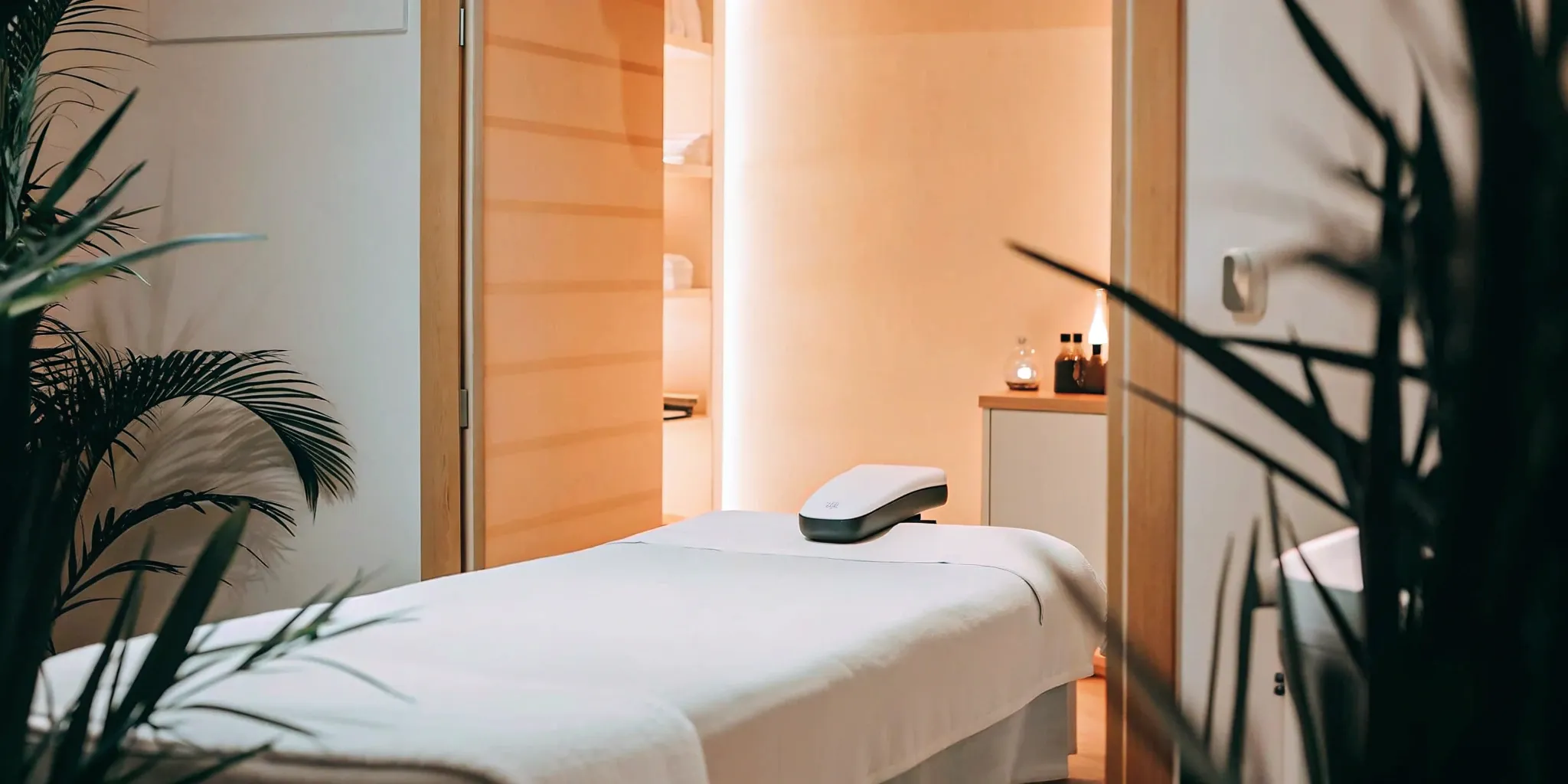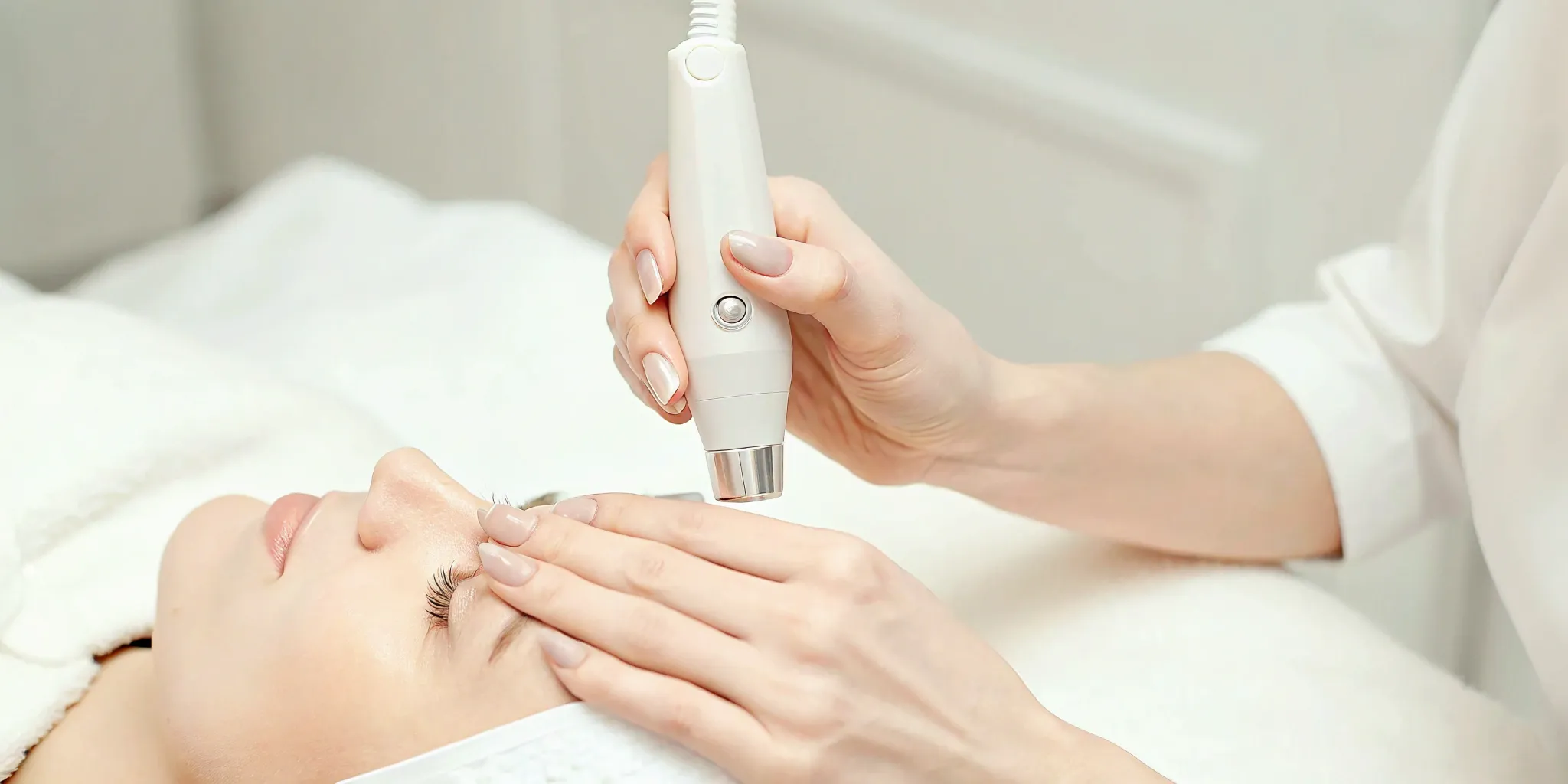The decision to remove a tattoo is a personal one, often tied to a desire to move forward and embrace a new chapter. But that desire can quickly meet the frustrating reality of cost. While you should be cautious of deals that seem too good to be true, don’t let the fear of expense stop you. Safe, effective, and affordable tattoo removal is achievable. This guide will show you how to find reputable providers who offer flexible payment options and how to research community resources. We’ll explore the different avenues available, including specialized programs that provide low income tattoo removal, so you can find a path that works for your budget and your goals.
Key Takeaways
- Always Choose a Professional Over At-Home Kits: Professional laser removal is the safest and most effective path to clear skin. At-home creams often lead to poor results and potential scarring, so investing in a qualified technician is crucial for a successful outcome.
- Don’t Let Cost Stop You: Affordable tattoo removal is within reach. Look into non-profit programs that offer free or low-cost services, and ask reputable clinics about payment plans or financing to find a solution that fits your budget.
- Do Your Homework Before Committing: A safe provider is more important than a cheap one. Vet a clinic’s credentials, read reviews, and use your consultation to ask specific questions about their technology and experience to ensure you receive quality care.
What Are My Tattoo Removal Options?
When you’re ready to say goodbye to a tattoo, you’ll find a few different paths you can take. Some are safer and more effective than others. Understanding your choices is the first step toward making a decision that feels right for you, your budget, and your skin. Let’s walk through the most common methods, from professional treatments to the at-home kits you might have seen online.
Professional Laser Removal
Professional laser treatments are widely considered the most effective way to remove tattoos. While they are often the most expensive option, they deliver the best results with the lowest risk of scarring when done by a qualified technician. During a session, a specialized laser sends pulses of light into your skin. The light is absorbed by the tattoo ink, breaking the pigment into tiny particles that your body’s immune system can then naturally clear away. It takes multiple sessions to fade a tattoo completely, but it’s the gold standard for a reason. A professional laser tattoo removal treatment is a reliable way to get the clean slate you’re looking for.
Other Professional Methods
Besides lasers, there are other professional methods, though they are less common. Surgical excision, for instance, involves a surgeon cutting out the tattooed skin and stitching the remaining skin together. This can offer a faster removal process than laser treatment for small tattoos, but it does result in a surgical scar. Another option is dermabrasion, where the top layers of skin are essentially sanded down to remove the ink. This method can be painful and less precise than laser removal. These alternatives are best discussed with a medical professional who can assess your specific tattoo and help you weigh the pros and cons of all available aesthetic services.
The Truth About At-Home Kits
You’ve probably seen ads for at-home tattoo removal creams and kits. They promise an easy, cheap fix, but the reality is quite different. These creams are cheaper but usually don’t work as well as professional methods because they can’t penetrate deep enough into the skin to reach the tattoo ink, which sits in the dermal layer. At best, they might slightly fade the tattoo. At worst, they can cause serious skin irritation, chemical burns, and permanent scarring. This not only damages your skin but can also make future professional removal more complicated and costly. It’s best to save your money and protect your skin from these ineffective products.
How to Prioritize Your Safety
No matter which removal method you’re considering, your safety should always come first. The best way to ensure a good outcome is to talk to a trusted tattoo removal expert to make sure the process is safe and effective for you. A qualified provider will be licensed, have extensive experience, and use medical-grade equipment. They should offer a consultation to assess your tattoo, explain the process, and answer all your questions. Don’t be afraid to ask about their credentials and see before-and-after photos of their work. If you’re ready to explore your options with a professional, you can schedule a consultation to get personalized advice.
Find Free and Low-Cost Removal Programs
If the cost of professional tattoo removal feels out of reach, please don’t lose hope or turn to risky at-home methods. Several incredible programs across the country offer free or low-cost laser tattoo removal to help people get a fresh start. These initiatives are often run by non-profits, community groups, and even government-supported organizations.
The primary goal of these programs is to help individuals overcome barriers to employment, housing, and social reintegration. They typically focus on removing visible tattoos that may be holding someone back, such as gang-related symbols, hate symbols, or tattoos on the hands, neck, and face. While not everyone will qualify, it’s absolutely worth exploring these options. Finding the right program can be a life-changing step, allowing you to move forward without the physical reminder of a past you’ve left behind. Think of this as a starting point for your research—a guide to connect you with the resources that can help.
Non-Profit Organizations
Many non-profits are dedicated to helping people transform their lives, and tattoo removal is a powerful way they do that. These organizations understand that a visible tattoo can be a serious obstacle to finding a job. A fantastic resource to start with is the Jails to Jobs directory, which maintains a nationwide list of free and low-cost removal programs. You can search by your city or zip code to find help near you. These programs are designed to support individuals who are ready to make a positive change and need a hand to get there.
Government Assistance
In some areas, you can find government-funded or supported programs that provide free tattoo removal services. These initiatives are often aimed at specific groups, such as the formerly incarcerated, former gang members, or survivors of human trafficking. For example, the INK-nitiative program is a social impact project that offers free removal of tattoos that represent a past life. The focus is on removing symbols that no longer reflect who you are today, helping you reintegrate into the community and pursue new opportunities with confidence. Check your state and local government websites for similar public health or rehabilitation programs.
Services for Military and Veterans
For active service members and veterans, certain tattoos can create challenges, whether it’s violating updated military regulations or hindering the transition to a civilian career. While the VA doesn’t typically cover tattoo removal, many community-based programs offer free or discounted services specifically for military personnel. Organizations often partner with local clinics to provide this support. A good first step is to contact your local VA center or a veteran support organization to ask about available tattoo removal resources in your area. They can often point you toward providers who are proud to serve those who have served.
Rehabilitation and Community Programs
Tattoo removal is often a key component of broader rehabilitation and community support systems. Halfway houses, job training centers, and other community outreach groups sometimes partner with laser clinics to offer removal services. They recognize that removing a tattoo can be a critical step in helping someone secure stable housing and employment. These programs view tattoo removal not just as a cosmetic procedure, but as a tool for empowerment and social change. If you are part of a rehabilitation program, ask your case manager or counselor if they have partnerships that could add laser tattoo removal to your support plan.
Local Health Centers
Don’t overlook your local community health centers and public hospitals. While they may not offer laser tattoo removal themselves, they are often hubs of information for local health and wellness resources. The staff can frequently refer you to affordable clinics or non-profit programs in your area that they trust. These centers are committed to public health and can be a valuable ally in your search. Start by calling your city or county’s public health department or a nearby federally qualified health center to inquire about low-cost tattoo removal options available to residents.
Find Affordable Services Near You
If non-profit programs aren’t the right fit for you, don’t worry. There are still plenty of ways to find affordable, professional tattoo removal. Many clinics, hospitals, and community health centers offer high-quality services without the premium price tag. The key is knowing where to look and what to ask for. From specialized med spas to university training programs, you have more options than you might think for getting a clean slate that fits your budget. Exploring these avenues can help you find a safe, effective, and financially manageable path to removing your unwanted ink.
Medical Spas and Clinics
You might think of medical spas as a luxury, but many are committed to providing accessible treatments. These clinics often have the latest technology and can offer competitive pricing or special programs. For instance, here at Ultimate Image MedSpa, we use the advanced PicoWay laser, with treatments averaging around $353 per session depending on your tattoo’s size, color, and age. Other clinics have unique programs, like Removery’s INK-nitiative, which offers free removal for those with tattoos from gangs or trafficking. It’s worth researching local providers like MEDermis Laser Clinic or Delete Tattoo Removal, as many focus specifically on making the process affordable.
University Teaching Hospitals
Another excellent place to look for cost-effective tattoo removal is a university teaching hospital. Because these hospitals are training the next generation of dermatologists and plastic surgeons, they often provide services at a significantly lower cost. Don’t let the “training” part scare you—all procedures are closely supervised by experienced, board-certified doctors. You get high-quality care while helping residents gain valuable experience. Check the websites of universities near you or call their dermatology departments to see if they offer tattoo removal services and what their pricing structure looks like. It’s a smart way to access top-tier medical facilities on a budget.
Providers with Sliding Scale Fees
Some clinics and health centers offer what’s known as a sliding scale fee. This is a flexible payment model where the amount you pay is based directly on your income. It’s designed to make healthcare more accessible to everyone, regardless of their financial situation. If you find a provider you’re interested in, it never hurts to ask if they have a sliding scale option or other income-based financial assistance programs. Many community health centers use this model, so they can be a great place to start your search. This approach ensures you pay a fair price that you can actually manage, taking a lot of the financial stress out of the process.
Your Local Community Resources
Sometimes the best resources are hiding in plain sight right in your own community. Local non-profits, social service agencies, and even public health departments often keep lists of free or low-cost medical services, including tattoo removal. These organizations are dedicated to connecting people with the help they need, and they may know about programs that don’t show up in a Google search. A great place to start is with directories compiled by groups like Jails to Jobs, which maintains lists of programs across the country. A quick phone call to a local resource center can point you in the right direction.
How to Qualify for Assistance
Finding a program that offers free or low-cost tattoo removal is a huge step, and the next is seeing if you qualify. Each program has its own set of rules, so it’s important to read the fine print. The goal of these programs is often to help people move forward from a past that no longer represents them. This could mean removing tattoos that are barriers to employment or that are constant reminders of a difficult time.
While every organization is different, many focus on helping specific groups of people. Understanding the general requirements can help you figure out where to focus your search and prepare your application. It’s all about finding the right fit for your situation so you can get the support you need.
Check Your Eligibility
The first thing you’ll need to do is confirm that you meet a program’s specific criteria. Many assistance programs are designed to help individuals whose tattoos are connected to a past they are trying to leave behind. For example, some programs state you can apply if you were formerly in prison, were a gang member, or are a survivor of human trafficking or domestic abuse. Others specifically help remove racist or hate-symbol tattoos. Before you get too deep into an application, find the eligibility page on the program’s website and see if your situation aligns with their mission. This will save you time and help you focus on the opportunities that are the best match for you.
Gather Your Documents
Once you find a program you might qualify for, it’s time to get your information in order. Most applications are online and will require more than just your basic contact details. Be prepared to write a personal statement explaining how your tattoo is tied to your past and why removing it is an important step for your future. You will also need to upload clear photos of the tattoo. Some programs require a reference from an “advocate”—this could be a parole officer, a social worker, a therapist, or a counselor who can speak to your journey. Having all of this ready to go will make the application process feel much more manageable.
Navigate the Application Process
After you’re accepted into a program, your commitment is key. Tattoo removal isn’t a one-and-done treatment; it requires multiple sessions spaced weeks apart. Programs expect you to show up for all of your scheduled appointments on time. If you need to cancel, you’ll likely have to provide at least 24 hours’ notice. These rules are in place because resources are limited, and the providers want to help as many people as possible. Following through on your appointments shows you’re serious about the process and respectful of the opportunity you’ve been given. It’s a partnership, and your dedication is a crucial part of making it work.
What to Do in Special Circumstances
Let’s be honest: finding affordable and accessible tattoo removal can be a real challenge, especially for those who have been incarcerated or were formerly affiliated with gangs. Research shows that these are significant barriers for people trying to reintegrate into their communities. If you’re feeling overwhelmed by the process, don’t give up. Reach out to a local social worker, a community support organization, or your parole officer for help. They may be aware of local resources or be able to help you complete applications. Persistence is important, and having someone in your corner can make all the difference. If you don’t qualify for assistance, you can always contact us to discuss payment options.
Know the Types of Programs Available
You’ll find that assistance comes from a few different types of organizations. Some are national non-profits with chapters across the country, while others are small, local initiatives run by a single clinic. To get a better sense of what’s out there, a great place to start is an online directory. For instance, the non-profit Jails to Jobs maintains a fantastic directory of programs across the United States that you can search by city or zip code. This can help you quickly identify potential options in your area. Exploring these different avenues will give you the best shot at finding a program that fits your needs and can help you on your journey.
Make Tattoo Removal More Affordable
The cost of professional tattoo removal can feel like a huge hurdle, but it doesn’t have to be a dealbreaker. While you should be wary of any clinic offering suspiciously cheap services, there are plenty of legitimate ways to make the process fit your budget. It’s all about knowing what to ask for and what resources are available to you. Many reputable clinics, including ours, understand that this is a significant investment in yourself and are willing to work with you. By exploring payment plans, financing, and other financial tools, you can create a clear and manageable path to removing your unwanted ink without compromising on safety or the quality of your results. The key is to be proactive and have an open conversation about cost during your laser tattoo removal consultation.
Ask About Payment Plans and Financing
Don’t be afraid to talk about money upfront. Most professional clinics are used to discussing costs and offer options to make their services more accessible. Ask directly if they have payment plans or financing partnerships. These programs are designed to break down the total cost of your treatment into a series of smaller, more manageable monthly payments. This can make a huge difference, allowing you to get started sooner without having to pay the full amount all at once. It’s a standard practice in the industry, so a good provider will be happy to walk you through their options. You can always contact us to learn more about the financial solutions we offer our clients.
Use Healthcare Credit Options
Another great tool to look into is healthcare credit. Options like these function like credit cards but are specifically for health, wellness, and beauty-related expenses. Many medical spas and dermatology clinics accept them. If you qualify, you can finance your tattoo removal and pay it off over time, often with promotional periods that offer low or no interest. This can be an excellent way to manage the expense without draining your savings. When you go in for a consultation, ask which healthcare credit options the clinic accepts so you can see if it’s the right fit for your financial situation.
See if Insurance Will Cover It
While it’s true that tattoo removal is almost always considered a cosmetic procedure, there are rare instances where insurance might offer coverage. This typically only happens if a tattoo is proven to be medically necessary to remove—for example, if it’s causing a significant skin condition or an allergic reaction. Some programs have also explored coverage for individuals leaving gangs or incarceration, where visible tattoos can be a barrier to employment and social reintegration. It’s a long shot, but it costs nothing to check with your insurance provider to understand the specifics of your plan and see if your situation qualifies for any exceptions.
Set Up a Monthly Payment Program
Beyond third-party financing, some clinics offer their own in-house monthly payment programs. This is an arrangement made directly between you and the provider. You agree on a payment schedule that allows you to spread the cost of your treatment package over several months. This can be a straightforward and convenient option, as you’re dealing directly with the clinic you already know and trust. It shows that the provider is invested in helping you achieve your goals and is flexible enough to accommodate your budget. Be sure to ask about this during your consultation to see if it’s a possibility.
Use Your Flexible Spending Account (FSA)
If you have a Flexible Spending Account (FSA) or Health Savings Account (HSA) through your employer, you might be able to use those pre-tax dollars for your tattoo removal. While typically reserved for traditional medical expenses, some plans may cover procedures like tattoo removal if they can be classified as treatment for a condition that causes significant emotional distress. The rules can be specific, so you’ll need to check with your FSA or HSA administrator to confirm eligibility. If it’s approved, using pre-tax money is a smart way to save on the overall cost of the tattoo removal process.
Compare Your Costs
Finally, do your homework and compare costs between a few reputable providers. When you get a quote, make sure it’s comprehensive. Does it include all fees? What is the estimated number of sessions? Are there any additional charges for aftercare supplies? A trustworthy clinic will be transparent about all potential expenses. This isn’t about finding the absolute cheapest option—rock-bottom prices can be a red flag for outdated technology or inexperienced technicians. Instead, you’re looking for the best value, which combines a fair price with the highest standards of safety, expertise, and care.
Choose a Safe and Affordable Provider
Finding a tattoo removal service that fits your budget is important, but it should never come at the expense of your safety. The person pointing a laser at your skin needs to be a trained professional. As you compare your options, think of it less as bargain hunting and more as hiring a specialist for an important job. A lower price tag isn’t a good deal if it comes with poor results or, worse, permanent skin damage. Here’s how to find a provider who is both reputable and affordable.
Evaluate a Provider’s Credentials
Before you even book a consultation, do a little homework on the clinic. You want to make sure the technicians performing the laser tattoo removal are skilled and have the right training. Check the provider’s website for information about their team’s certifications and experience. How long have they been in business? Do they specialize in tattoo removal? Look for online reviews and testimonials on independent sites to get a sense of other clients’ experiences. A reputable clinic will be transparent about their qualifications and have a solid track record of successful removals.
Questions to Ask During Your Consultation
Your consultation is your chance to interview the provider and make sure you feel comfortable. Don’t be shy about asking questions—a good technician will be happy to answer them. Start with the basics: What kind of laser technology do they use? Is it effective for the colors in your tattoo? Ask to see before-and-after photos of tattoos similar to yours in size and color. You should also ask about the estimated number of sessions you’ll need and what the healing process looks like between treatments. This is your opportunity to get all the information you need to make an informed decision.
Understand the Treatment Timeline
It’s crucial to have realistic expectations from the start. Tattoo removal is a process, not a single event. Most tattoos require multiple sessions, typically spaced six to eight weeks apart, to allow your skin to heal and your body to flush out the ink particles. The total number of treatments depends on factors like the tattoo’s age, size, location, and the colors of the ink. A professional provider will explain this timeline to you during your consultation, giving you a clearer picture of the overall commitment in terms of both time and cost.
Balance Cost with Quality
While this guide is focused on affordability, the cheapest option is rarely the best when it comes to medical procedures. Choosing a clinic based on skill and experience over the lowest price can save you from complications and poor results down the road. An inexperienced operator might use the wrong settings, leading to ineffective treatments or skin damage, which could end up costing you more to fix. Think of this as an investment in your skin and your health. Paying a bit more for a highly-qualified provider who offers a range of professional services ensures you get the safest, most effective treatment possible.
Red Flags to Watch For
As you research, keep an eye out for warning signs that a provider might not be trustworthy. Be wary of anyone who guarantees complete removal in a specific number of sessions, especially without seeing your tattoo first. High-pressure sales tactics or deep discounts that seem too good to be true are also red flags. A clean, professional environment is non-negotiable. If the clinic seems untidy or the staff is unwilling to show you their credentials, it’s best to walk away. Trust your gut—if something feels off, it probably is.
Related Articles
- Cheap Laser Tattoo Removal: Finding Quality & Affordability – Ultimate Image MedSpa
- Laser Tattoo Removal | Everything You Need to Know
- Fast Tattoo Removal: Safe & Effective Options – Ultimate Image MedSpa
- Affordable Tattoo Removal: A Practical Guide – Ultimate Image MedSpa
- Tattoo Removal Before & After: What to Expect – Ultimate Image MedSpa
Frequently Asked Questions
Does laser tattoo removal hurt? Most people say it feels like a rubber band snapping against the skin—uncomfortable, but manageable. The good news is that a removal session is much faster than a tattoo session. Professional clinics also use cooling devices to numb the area and make the process as comfortable as possible. Your technician will talk you through what to expect and how to care for your skin afterward to minimize any discomfort.
Will my tattoo be completely gone after the treatments? The goal of laser removal is to fade the tattoo until it’s no longer noticeable. For many people, this means the ink disappears completely. However, factors like the tattoo’s age, the colors of the ink, and your skin type all play a role in the final result. A qualified provider will give you a realistic idea of what you can expect during your consultation, but you should be wary of anyone who guarantees 100% removal from the start.
I’ve seen tattoo removal creams online. Are they a safe alternative? In short, no. These creams are not a safe or effective way to remove a tattoo. Tattoo ink sits deep in the dermal layer of your skin, and a topical cream simply can’t reach it. At best, these products might slightly fade the top layer of your skin, but at worst, they can cause chemical burns, irritation, and permanent scarring, which can make future professional removal more difficult and costly.
Why shouldn’t I just choose the cheapest tattoo removal clinic I can find? While affordability is important, price shouldn’t be the only factor you consider. An unusually low price can be a red flag for outdated technology, an inexperienced technician, or a clinic that isn’t following proper safety protocols. Tattoo removal is a medical procedure, and investing in a reputable provider ensures you get the safest treatment and the best possible results. Paying a little more for expertise can save you from the cost and pain of fixing a botched job.
This is a lot of information. What’s the very first thing I should do? The best first step is to schedule a consultation with a qualified professional. All the research in the world can’t replace a one-on-one conversation with an expert who can assess your specific tattoo, answer your questions, and give you a clear treatment plan and cost estimate. It’s the most direct way to get the personalized information you need to make a decision that feels right for you.


